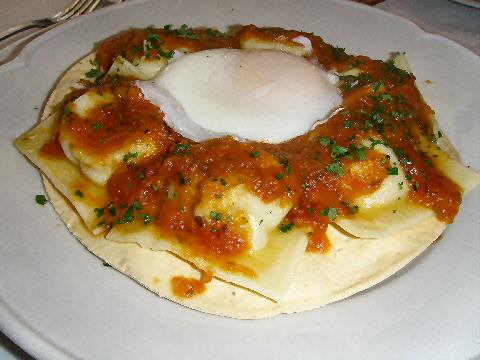Sun, sea, wine and red meat every day. Scientists say a village in Sardinia holds the key to long life.”
– Robert Hardman, UK Daily Mail
Buenos Aires – While I’m gathering my thoughts and notes on Supreme Director Posadas, I thought I’d fill in the time with a little diversion….
A “giara” is a plateau, the most famous of which, the “giara manna” is in south central Sardinia famous for its mysterious miniature horses – mysterious as their ancestry is simply not known. Sardinia, if you’re not sure, is a large island in the Mediterranean that officially is part of the Italian republic, though I’d bet not a Sardinian out there would claim to be Italian. If anything, they probably share more in common with the next neighboring large island, Corsica, which has a similar relationship to France. I can’t claim vast knowledge of Sardinian cuisine – I’ve sampled a dish here and there over the years, I’ve probably even tried my hand at one or two in the kitchen, following a recipe from a book. So when my friend Wayne over at Southern Cone Guidebooks mentioned a new spot serving up the stuff, I put it on my list to check out. Sa Giara, Gurruchaga 1806 in Palermo, 4832-5062, was, to put it simply, delightful. [Closed in early 2012]
First, the room – nicely, cleanly laid out, vivid blue and white, nice glassware and flatware, a little gas-fired fireplace off to one side, a charming brick patio in an alcove out front. Our waiter, friendly, effecient, cute… the manager popped by to make some personal recommendations for some of the food. All in all a good beginning.
We started off with some delicious flatbread, variously called carta de musica or pane carasau in different parts of the island, along with two different dips, one of beans the other of chickpeas, both delicious. We ate our way through the flatbread much faster than we should have, and our waiter showed up with more when we were both just considering that we really ought to leave room for lunch. The menu is focused on casual food – a range of tablas, plates of cheeses and cured meats are offered, along with various pastries, all to go with tea, which is stated as a specialty of the house, though it didn’t seem as if their selection was particularly large. There is a small menu of meat dishes – beef, lamb, and pork – and a short selection of pastas, which was the direction we both decided to go for lunch.

Prices are not inexpensive, but that’s becoming more and more common these days. The pastas run around 30 pesos apiece, the specialties slightly more. But, with two pastas, one dessert, two bottles of water, a coffee and a tea (and the ubiquitous cubiertos charge here) it ran us roughly 60 pesos apiece. Still, we’ll be back to try the place again. It was well worth it….
That ravioli dish looks really good! I can just imagine that egg oozing all over the place and getting soaked up by the bread. Was the pane carasau cracker dry or did it have a little bit of chew? Not that it matters, just never had it before.
Definitely on the cracker dry side to start, though by the time it soaked up some of the egg and the tomato sauce it was a bit softer.
This spot looks and sounds like a definite winner, Dan. Why are prices going up there? Is it the overall global economic situation or something more local to Argentina?
It’s a combination of reasons, but the main one is simply local inflation – since the economic crash in 2001 prices have gone up an average of approximately 35% a year, pretty much across the board. As that starts to compound, it gets more and more noticeable. Part of the reason for that rate of inflation is simple “recovery” – one must remember that prior to the crash, Argentina, and Buenos Aires in particular, was one of the most expensive places to live on the planet; and part of it is (and this fits in neatly with my leadership history lesson the other day) a return to past economic policies like protectionism, high import and export taxes, and at base level, government corruption, all things that have occurred repeatedly before and led to one economic and/or political disaster after another.
[…] only time I’ve ever tried pane frattau was at a little Sardinian spot here in BsAs. At the time, I assumed… well, actually, was told… that it was served the […]
[…] This post was mentioned on Twitter by Dan Perlman. Dan Perlman said: @ejajo Here's a link to the way the chef who taught me how to make it makes it: http://bit.ly/afFCUB though the ravioli are "extra" […]
[…] fresh tomatoes or a tomato sauce, and a fried egg. [This dish I’ve both seen in restaurants, for example here, and made here at […]
[…] some precedent for using a flatbread, but usually not this flat, nor this texture. Then again, pane carasau is oft-times served almost like a pasta, soaked in tomato sauce until soft and pliable. Like chilaquiles and tortillas! The second difference wasn’t […]